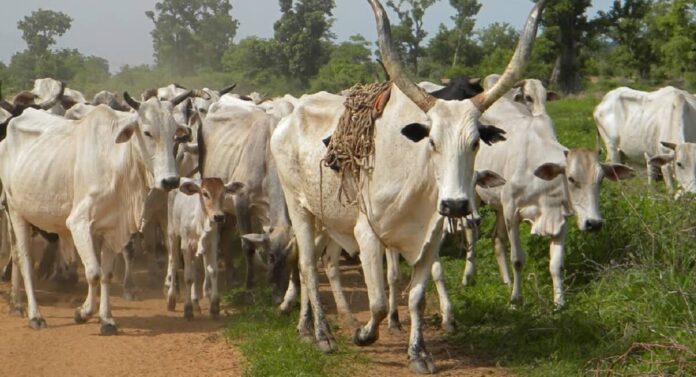Cattle is one of the livestock species predominantly kept by both local farmers and Fulani herdsmen.
Cattle farmers usually keep them for their meat. This accounts for about 33% of all locally produced meat. There are a number of cattle species in Ghana. The dominant ones are; Sanga, West African Shorthorn, Ndama and their crosses.
Read also: What is the Agricultural Solution for Nomadic Fulani Herdsmen and Crop Farmers in Ghana?
What are the Groups of Cattle?
- Beef cattle for meat production
- Dairy cattle for milk production
- Dual-purpose cattle for beef and milk
What do you need to consider before raising cattle?
Things to consider before starting cattle production
- Breeding stock (1 bull – 25 cows).
- Housing and equipment.
- Feeding.
- Health management.
Read also: Detailed Guide to Pig Production and Management in Ghana
Breeding Stock
Breeds for cattle production are local (indigenous) or foreign (exotic). You may use cross breeds which have certain advantages. Not exotic which have difficulties withstanding the harsh climatic conditions.
Selection of breeding stock
Cows
- Cows should have well-developed udder and teats.
- They should have large hindquarters.
- Cows must be docile and have good mothering ability.
- They should have good body structure.
Bulls
- They should have well-developed testes of equal size.
- Bulls should have very strong hind legs.
- They should be very active. Not shy. A shy breeder is a bull that will neither allow any bull to cross a cow nor cross itself.
- Bulls should have good body structure.
Read also: Detailed Guide to Rabbit Production and Management in Ghana
Mating
Mating takes place when the cow is on heat. Heat is repeated every 21 days. The main sign of heat is that the female mounts other cows and allows others to mount it. It becomes restless and the vulva becomes red.
Housing and equipment
Farmers use simple housing made from locally available materials to construct kraals. You need bamboo tree branches, wood scantling and thatch for the housing. Floor space for housing is 2.5-3m2 per cattle. Site the housing on the outskirts of the town. Have an adequate supply of water. It should be well ventilated.
Equipment required includes; Weighing scale, burdizzo, dehorners, watering and feeding troughs, milking utensils etc.
Feeding
Cattle are ruminant herbivores. They feed mainly on grass. In the semi-intensive system, they send cattle out to graze during the day. They develop pastures to feed the animals. About one acre of developed pasture would be adequate for matured cattle a year. Example of grass and legumes used on pastures include Panicum maximum (Guinea grass) Leucaena spp, elephant grass, Centrosema, etc. Also, you may use supplementary feeds such as wheat bran, spent malt and concentrates. To enhance feed utilization and steady growth especially during the dry season, we recommend, you give minerals block or urea-molasses block.
Read also: Paddock Grazing System: A Solution to Cattle Production in Africa
Health Management
Improved health management requires regular cleaning of kraals and vaccination of the animals against scheduled diseases such as foot & mouth disease, Anthrax, Brucellosis, Lumpy skin and Rinderpest.
Husbandry Practices
- Castrate males at 3-6 months
- Trim hoof when required
- Dehorn/disbud at 1-2 months old
- Clean kraals and pens daily
- Dip/spray against ectoparasites often in the wet season.
- Deworm young animals regularly
Read also: Detailed guide to Layer Production in Ghana from the experts
Production parameters involving improved breeds (crossbreed)
| Gestation period | 9 months |
| Age at weaning | 3-4 months |
| Litter size | 1 |
| Calving index | 1 |
| Fertility rate | 70% |
| Age of first mating | 2 years |
Reference: http://mofa.gov.gh


